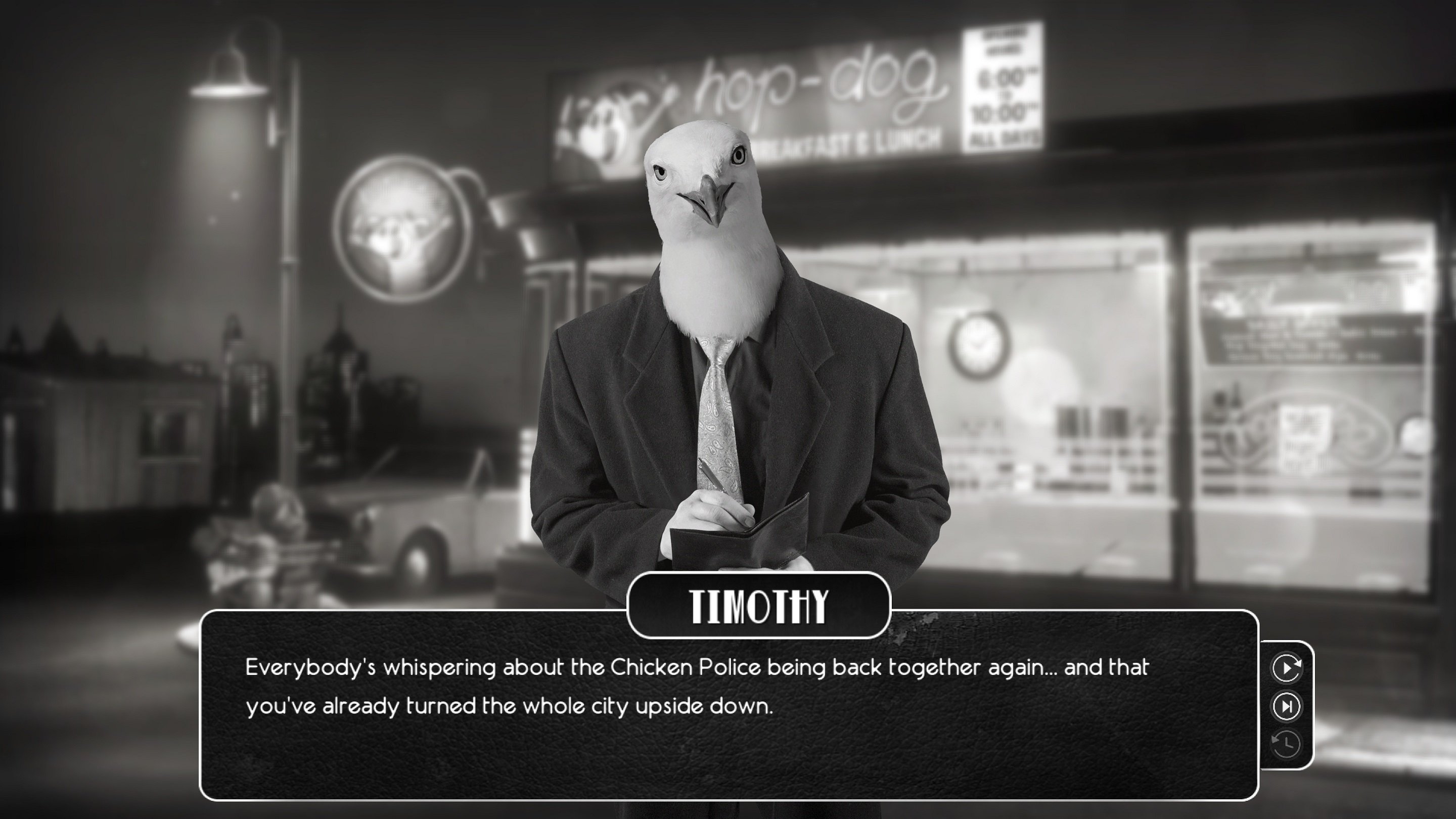
The cursor can be used to highlight things and interact with them through the aforementioned action wheel. The map simplifies the the process of getting around town.Įvery location is made up of a large screen you can scroll left to right to see objects and people to examine or talk to. This is made easier by each spot being denoted with a symbol for optional and story-relevant locations. Experiencing all of the conversations and scenes the game has to offer requires exploring every inch of the city you can before proceeding to where you’re tasked with going. Certain areas are only accessible for limited periods of time, depending on where you’re at in the story. You can travel to different notable locations across Clawville via a map screen. Navigation for the entirety of Chicken Police is done through a cursor you move around the screen. A few unique sections serve to vary the gameplay. The game has many things that set it apart from others, but including more mini-games would have really put it over the top. They are usually pretty fun, but unfortunately, there are not very many of these novel events in the game. These include things such as car shootouts and knot untying. There are a variety of ways to interact with the game’s environments.Ī few unique gameplay segments appear throughout the game, adding some variety. You also have an inventory for keeping items you find, but unlike most point-and-click games, items are not actually used in any meaningful way, making its inclusion frankly puzzling. Conversations often give you clues that move the story along.

Options to ask specific questions or even interrogate individuals can also open up depending on the circumstance. This is done with an action wheel that pops up when interacting with an object or NPC, allowing you to examine or talk to them. You travel to different locations around the city of Clawville and examine the environment for clues regarding the case Sonny is working on. GAMEPLAYĬhicken Police‘s gameplay consists of two main things: exploration and investigation. The issue isn’t too common, but it is a bit jarring to see these mistakes. You may find that some of the entries are mixed, with descriptions appearing twice across two different character or landmark sections. This makes it easier to follow the game’s story and stay up to date on the information you’ve gathered. The game also includes menus that help you keep track of what’s happened in the plot, as well as sections that describe information about the city’s landmarks and citizens you’ve met. The twists and turns of the story can keep you engaged and invested in the events that take place. You don’t spend a moment in Clawville not feeling absolutely immersed within its murky intrigue.

It’s this kind of storytelling that makes the plot especially memorable. Frequent monologues by Sonny, which appear throughout the game to recap his thoughts about where the story’s at, mirror the kind often found in those types of movies and novels. The plot of Chicken Police wouldn’t be out of place in a classic detective story.

The plot and dialogue is heavily influenced by early 20th Century hardboiled detective stories. What follows is a night filled with danger, deception, feathers, and fur. Sonny is quick to brush her request aside until he learns that this case has ties to his past. He’s shaken out of his short-lived respite from the force by a mysterious female visitor who asks for his help in investigating a string of threats against her employer.

Sonny was part of the popular police officer duo known as the Chicken Police, along with his partner Marty McChicken, but is currently on suspension for misconduct. The city is touted as a place where all animal species can coexist peacefully, but the things he’s seen in his career would suggest otherwise. Sonny Featherland is a rooster who’s been on the Clawville police force for over twenty years, which has beaten a jaded cynicism into him that he wears like a badge of honor. Chicken Police is a point-and-click adventure set firmly within this genre, in a city rife with corruption and crime. The heroes have demons of their own, and the law is seen as barely above the criminals they catch. A genre made popular in the 1940’s and 50’s, noir fiction portrays society in shades of gray, both figuratively and, in the case of motion picture titles, literally.


 0 kommentar(er)
0 kommentar(er)
